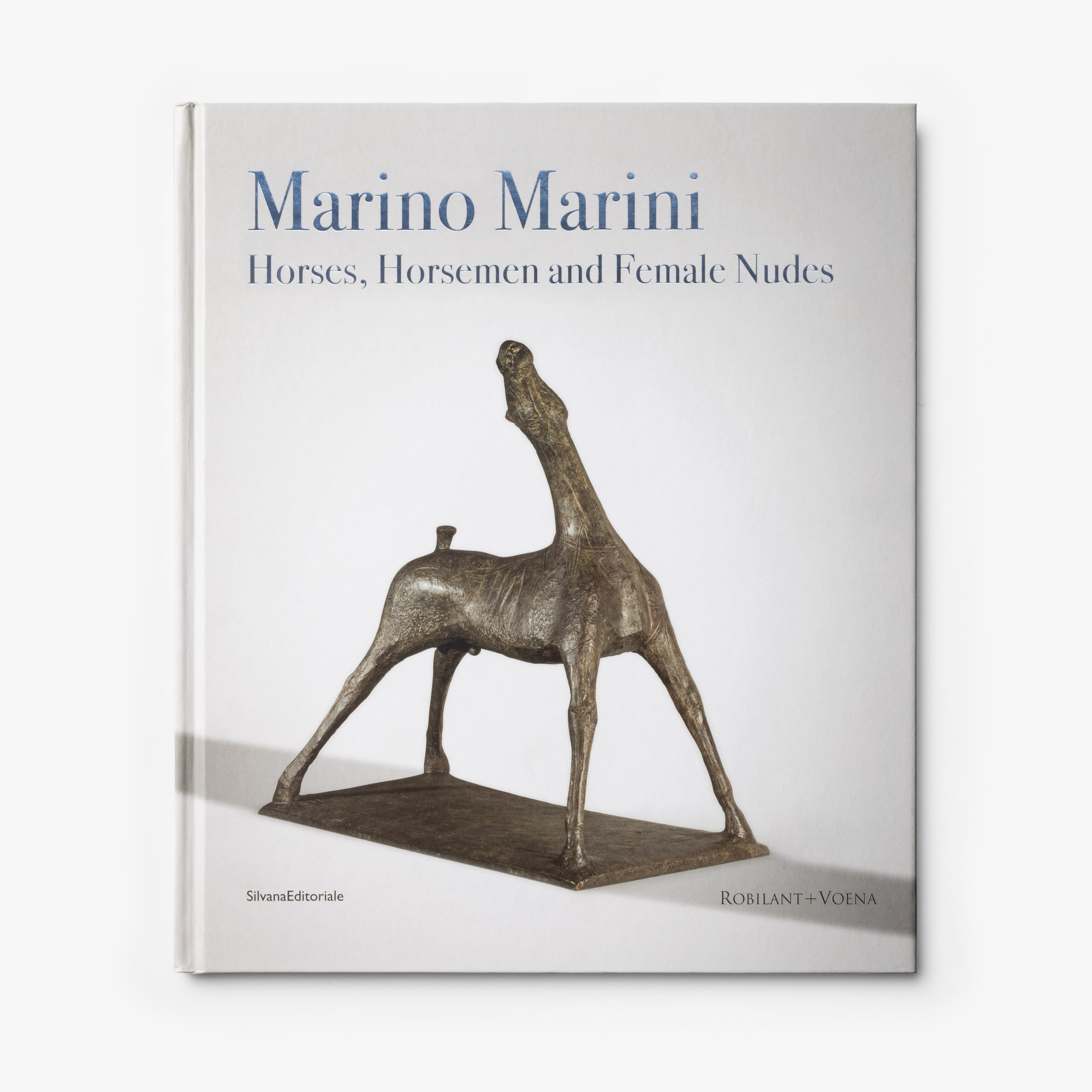Marino Marini
b. 1901, Pistoia, Italy
d. 1980, Viareggio, Italy
Piccolo Cavallo (Small Horse)
1950
Bronze
Edition of 6, cast 1950
46 x 56 x 36 cm (18 1/8 x 22 x 14 1/8 in).
Provenance
Literature
H. Lederer and E. Trier, Marino Marini, Stuttgart, 1961, pp. 76-77 (another cast illustrated).
A.M. Hammacher, Marino Marini, Sculptures, Paintings, Drawings, New York, 1970, pl. 165 (another cast illustrated).
P. Waldberg, H. Read and G. di San Lazzaro, Marino Marini, Complete Works, Milan, 1970, p. 363, no. 266 (another cast illustrated).
C. Pirovano, Marino Marini: Scultore, Milan, 1972, no. 272.
L. Papi, Marino Marini. Pittore, Turin, 1987, n.p..
C. Pirovano (ed.), Marino Marini: Catalogo del Museo San Pancrazio di Florence, Milan, 1988, p. 140, no. 128 (another cast illustrated).
G. Iovane, Marino Marini, Milan, 1990, p. 90.
M. Meneguzzo, Marino Marini: Cavalli e Cavalieri, Milan, 1997, p. 218, no. 52.
G. Carandente, Marino Marini: Catalogue Raisonne of the Sculptures, Milan, 1998, p. 235, no. 332b.
Description
Marino Marini was one of the leading sculptors of the twentieth century. His investigation of the equestrian form began in the 1930s, a fascination that would continue throughout his artistic career, with Marini developing a remarkable personal reinvention of this traditional theme.
The artist was originally inspired to focus on equine subjects by his exposure to medieval representations of knights on horseback and classical depictions of horses. The sculptor argued that ‘the entire history of humanity and nature can be found in the figure of the horse and rider’ and that he used the subject as his ‘own way of narrating history.’
Marini’s Cavalli, which obsessed the artist throughout his career, developed significantly after World War II. The conflict had a profound effect on Marini and the smooth fleshy surfaces, which typified his work of the 1930s and early 1940s, gave way to sharper, angular and scarred forms.
Marini believed that all serenity and beauty had been lost during the War years, during which he had witnessed terrified Italian peasants on rearing horses as they tried to escape periods of enemy bombardment. Many years later, in 1972, he argued that ‘the world itself is all expressionist: a restless world, open to anxiety…. A beautiful thing, such as a sculpture by Canova, has been transformed into a terrifying and dramatic form’.
The present sculpture, entitled Piccolo Cavallo, was conceived in 1950 and is a quintessential example of Marini’s post-War sculpture. The horse’s neck stretches unnaturally sideways in a horrifying grimace and its tense body appears to be straining against some unseen anguish. It appears to have thrown off its rider, perhaps in a moment of terror such as those experienced by Marini during the War. The bronze surface has also been heavily worked by the artist, resulting in a nervous, hatched appearance that accentuates the drama of the work.
This works comes with a certificate of authenticity, attached to photograph of work, no. 209, dated 17 May 2007.
The edition number of this work is not specified; Marini often did not inscribe edition numbers on his works. It is
however clear from the literature that this example is one of an edition of
six.
Three are in public collections - Wadsworth Atheneum, CT, Hirshhorn Museum, DC and the Sprengel Museum, Hanover.
The museums’ cataloguing does not in any of the three cases give an edition number, which implies that this information was not specified by the artist.
Three versions of the sculpture are in private collections. When these works have passed through public auctions, edition numbers have not been listed.





